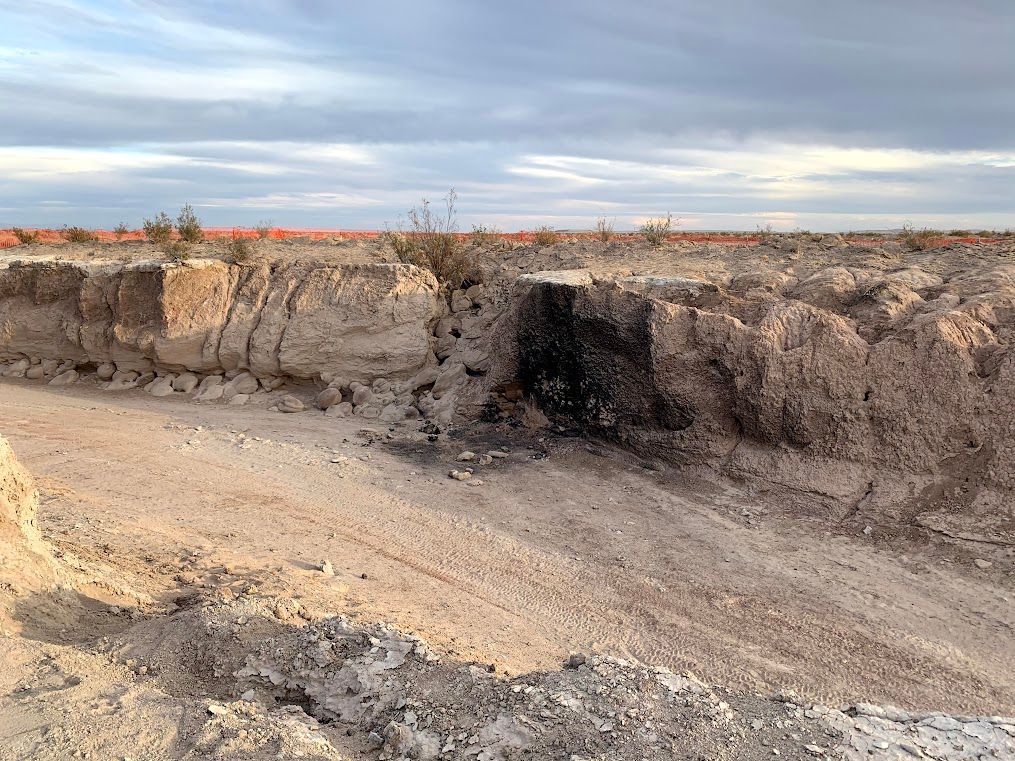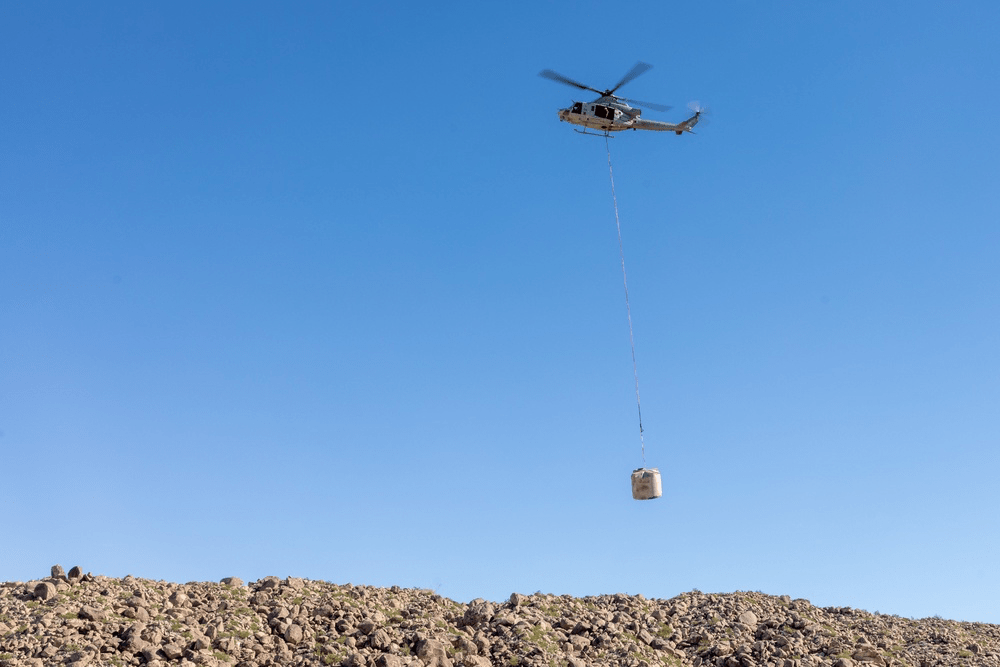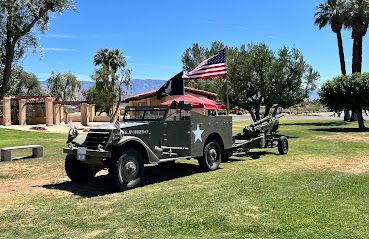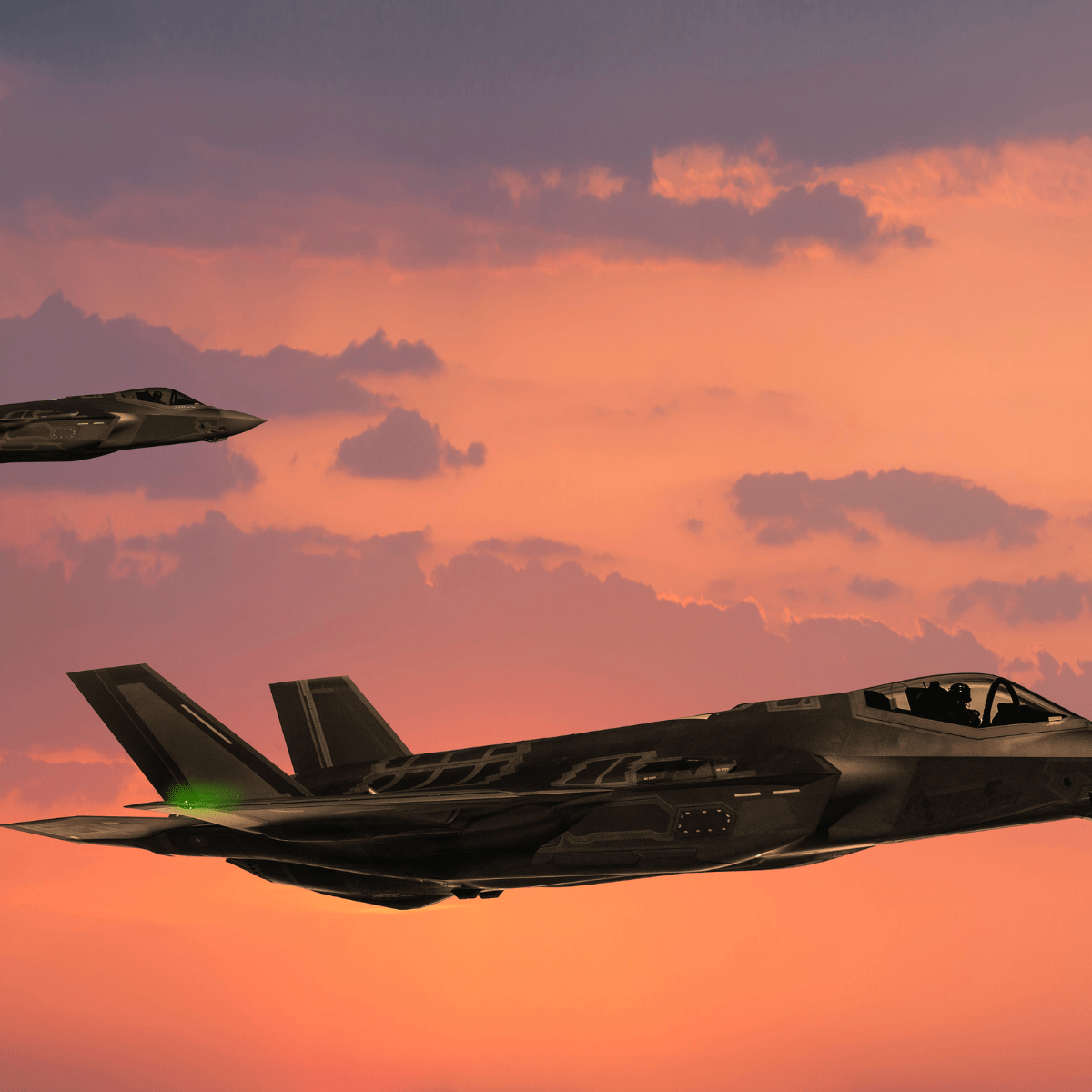August 30, 2023
Marine Corps’ Helping Bighorn Sheep in Anza-Borrego
Share

Learn More About Borrego Springs

Borrego’s Military Echoes Borrego Springs is renowned for its serene deserts and pristine night skies, but beneath its tranquil surface lies a military past rooted deeply in the sands of time. The Borrego Hotel, once an Emergency Landing Field and Bombing Range during World War II, stands as a testament to the area’s contribution to the nation’s wartime readiness. Borrego’s Wartime Role In 1941, as global conflicts escalated, the U.S. Navy selected the remote desert of Borrego Springs for military preparedness. The Borrego Hotel was transformed into a strategic site where pilots practiced vital skills such as high-altitude bombing and emergency procedures essential for combat. The facility included a 250-foot by 2600-foot dirt runway and a distinctive bombing target marked by concentric circles, making it a significant training hub for the San Diego Naval Air Station. The AT-11 Kansan was the typical aircraft used for bomb target practice. Military Legacy and Community Safeguarding Post-war, the site continued under Navy use until 1955, after which it was returned to private hands. Today, the land is primarily recreational, but the imprints of history remain. The U.S. Army Corps of Engineers has been involved in the environmental restoration of this Formerly Used Defense Site (FUDS), ensuring that the land, once a cradle of wartime activity, is now safe for public enjoyment. Their efforts included detailed investigations to identify and mitigate any residual hazards, confirming the area’s use for military training with findings of practice bombs and munitions debris. Echoes of History in Modern Tranquility The shift from a training ground to tranquil desert is profound. Where pilots once honed their wartime skills, visitors now experience peace and quietude. The Borrego Hotel’s legacy, intertwined with environmental restoration endeavors, continues to shape the region’s identity, bridging its historical military importance with its present-day role as a sanctuary for nature and relaxation. Voices from the Past: Borrego Springs’ Military Heritage Borrego Springs’ military heritage is preserved not only in historical documents but also in the memories and accounts of those who lived and served in the area. Interviews with local residents and military personnel offer a personal glimpse into the past, bringing to life the stories not captured in written records alone. Sgt. Grayson’s Insights : SGT Grayson of the San Diego County Sheriff’s Department Arson/Explosives Unit shared that he had no knowledge of ordnance activity at the Borrego Hotel site, extending his insights to the broader region of Anza Borrego State Park. Fire Department’s Perspective : Investigator Steve Sawyer of the Borrego Springs Fire Department Arson/Bomb Unit also had no recollection of ordnance presence at the former Borrego Hotel Site. Local Law Enforcement Observations : Deputies Hahn and McKenna confirmed no awareness of a target area or ordnance presence at the site, acknowledging other range activities within the Anza Borrego Desert State Park. Lifelong Residents’ Accounts : Nancy Ellis and David Ragsdill shared their lack of awareness of military activity at the Borrego Hotel site but knew of other military sites in the area. Legacy in the Land : Florence Leedy provided an account of a concentric circle bombing target on her property. Park Rangers’ Confirmation : Park Rangers like Fred Jee, Mark Jorgensen, and Jim Meiers acknowledged no knowledge of ordnance at the Borrego Hotel site but were familiar with evidence of past military activity within the area. Borrego Hotel: A Timeline of Transformation Pre-1941 : The area where Camp Ensign would be built was originally Ensign Ranch date palm orchards. 1941 : Opening of the Borrego Hotel Target Area for high-altitude bombing, dive-bombing, and strafing. 1942 : Establishment of the Borrego Valley Maneuver Area by the US Army as an Anti-Aircraft Training Center, also used by the Marine Corps. Construction of bombing stations, strafing stations, rocket targets, and anti-aircraft artillery for training. 1943 : US Marines construct Camp Ensign for military truck driving training at night. Ensign Ranch Airfield is built just south of Camp Ensign. 1944 : Closure of the Borrego Valley Maneuver Area in August. 1955 : Closure of the Borrego Hotel Target Area and Naval Outlying Landing Field. 1956 : Sale of the land of the Borrego Hotel Target Area and Naval Outlying Landing Field. Present : The region is known for recreational use and desert serenity, with environmental restoration efforts by the U.S. Army Corps of Engineers in the 1990s-2010s. Today, it is celebrated for its natural beauty and quietude, with historical significance commemorated by the community. These interviews and historical insights underscore the layered history of Borrego Springs, where the military past intersects with civilian life, creating a rich tapestry of heritage and tranquility. Check out this military report for more details.

F-35B Fighter Jet Crash in Ocotillo Wells SVRA On July 29, 2021, a U.S. Marine Corps F-35B fighter jet crashed in Ocotillo Wells SVRA near Anza-Borrego Desert State Park, California . The crash caused a small brush fire and led to the temporary evacuation of campers in the area as a precautionary measure. Fortunately, the pilot was able to eject safely and was rescued by a search and rescue team, later being released from the hospital after evaluation. The aircraft was part of the 3rd Marine Aircraft Wing based at Marine Corps Air Station Miramar and was on a routine training mission when the crash occurred. The incident involved the F-35B making contact with a KC-130J tanker during an air-to-air refueling exercise, which led to the crash. The U.S. Marine Corps launched a safety investigation to determine the exact cause of the crash. Though the brush fire caused by the crash was quickly contained, the crash site was closed for some time before reopening to the public.











